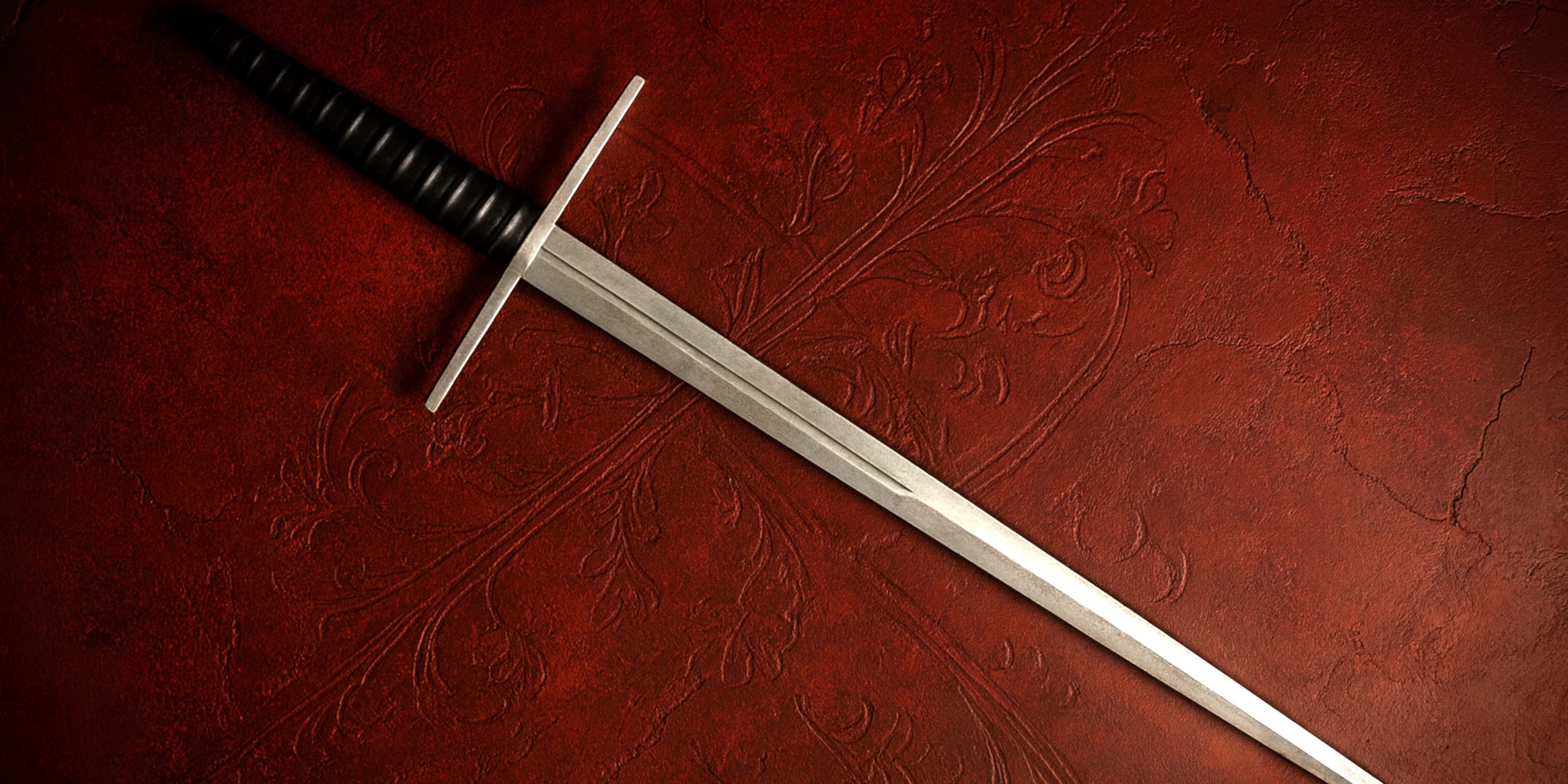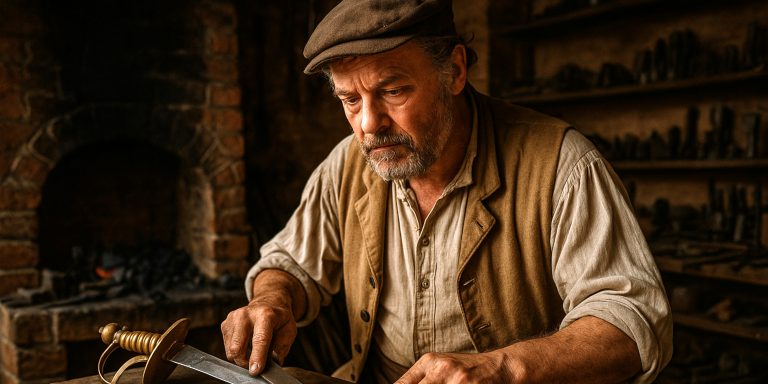
The Oakeshott Type XVII sword is a late medieval weapon defined by its long, rigid, and sharply tapered blade, designed primarily for thrusting through plate armour. Appearing in the mid-14th century and continuing into the early 15th century, this type marked a critical stage in the evolution of the knightly sword, as warfare shifted from mail-dominated protection to full plate harness. Type XVII swords are practical, severe, and purposeful, representing the knight’s adaptation to the hardened battlefields of late medieval Europe.
Specification
| Feature | Description |
|---|---|
| Type | Oakeshott Type XVII |
| Date Range | c. 1360 – 1420 |
| Primary Use | Thrusting and anti-armour combat |
| Blade Length | Typically 33 to 40 inches (85–100 cm) |
| Overall Length | Around 42 to 47 inches (107–120 cm) |
| Weight | 2.5 to 3.5 lbs (1.1–1.6 kg) |
| Blade Cross-section | Hexagonal or lenticular, stiff and tapering |
| Grip Length | 6 to 8 inches (often hand-and-a-half) |
| Pommel Type | Often scent-stopper (Type T or Type V) |
| Cross-guard | Straight or slightly curved, usually of rectangular section |
| Balance Point | Close to the hilt for precise point control |
| Materials | High-carbon steel blade, iron fittings, wooden grip with leather wrap |
History and Evolution
- The Type XVII emerged during a transitional period when knights faced increasingly sophisticated plate armour.
- Earlier cutting swords such as the Type XIII and XIV were less effective against plate, prompting the development of more thrust-oriented designs.
- The Type XVII bridges the gap between the earlier cut-and-thrust types and the purely thrusting estocs of the 15th century.
- Its long and tapered blade allowed knights to exploit weak points in armour, particularly at the joints and visor slits.
- Surviving examples suggest use across England, France, and the Holy Roman Empire, likely carried by both knights and men-at-arms.
- The design remained influential, with later types such as XVIII and XVa refining the balance between stiffness, point control, and cutting potential.
Advantages
- Exceptional thrusting capability against plate and mail.
- Rigid and durable blade well suited to half-swording techniques.
- Versatile length, allowing both one-handed and two-handed use.
- Excellent point control, ideal for the changing realities of late medieval warfare.
Disadvantages
- Reduced cutting efficiency due to narrow taper.
- Weight distribution can make prolonged use tiring compared to broader cutting swords.
- Specialised role limits effectiveness against lightly armoured foes.
- Complex forging process due to blade stiffness requirements.
Comparison with Similar Weapons
| Type | Period | Characteristics | Comparison |
|---|---|---|---|
| Type XIII | 13th century | Broad, flat cutting blade | Better for slashing but less effective against plate |
| Type XVa | Late 14th century | Thinner, diamond cross-section, superb thrusting | More refined point geometry but less robust |
| Type XVIII | 15th century | Elegant, balanced cut-and-thrust blade | Improved cutting recovery and handling |
| Estoc | 15th–16th century | No edge, purely thrusting | The Type XVII is its conceptual predecessor |
Legacy
- The Oakeshott Type XVII symbolises the adaptation of the knightly sword to the realities of armoured warfare.
- It represents a period when swordsmanship evolved into a science of precision, exploiting armour gaps rather than brute force.
- Surviving examples can be found in European museums, often associated with late medieval cavalrymen or knightly burials.
- Its design directly influenced later longswords and contributed to the development of early fencing techniques documented in treatises such as Fiore dei Liberi’s Fior di Battaglia.
Where to See
| Museum | Location | Notable Example |
|---|---|---|
| The Royal Armouries | Leeds, UK | Late 14th-century English longsword with hexagonal section |
| Kunsthistorisches Museum | Vienna, Austria | Austrian hand-and-a-half thrusting sword, c. 1380 |
| Wallace Collection | London, UK | Transitional longsword showing Type XVII features |
| Metropolitan Museum of Art | New York, USA | French or Burgundian example with scent-stopper pommel |
Collectors Guide
- Rarity: Genuine Type XVII swords are uncommon and highly sought after due to their transitional design and battlefield relevance.
- Condition Factors: Blade integrity, pommel and guard originality, and provenance significantly affect value.
- Market Value:
- Museum-quality or excavated examples: £40,000 to £120,000
- Restored or fragmentary pieces: £10,000 to £30,000
- High-quality modern reproductions: £800 to £2,000
Auction Examples:
- Bonhams (London), 2018: Late 14th-century thrusting longsword, £56,000.
- Hermann Historica (Munich), 2022: Knightly hand-and-a-half sword with hexagonal section, €61,000.
Collecting Tips:
- Prioritise examples with clear provenance and confirmed typology.
- Avoid over-cleaning, which can remove valuable patina.
- Seek documentation verifying authenticity, as Type XVII reproductions are common in the market.
The Seven Swords Takeaway
The Oakeshott Type XVII stands as a weapon of precision and intent. It reflects an age where knightly combat became an art of geometry and leverage rather than sheer strength. Its aesthetic simplicity hides an underlying sophistication, both in design and in purpose. For historians, collectors, and martial artists alike, it remains one of the most fascinating swords of the late medieval period, bridging the gap between the heroic cutting blades of the past and the technical mastery of the Renaissance longsword.



